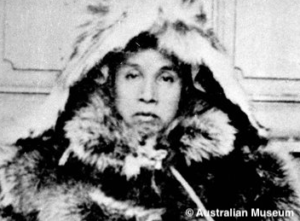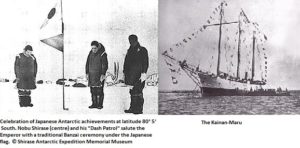
You may be aware of the tragic story of Captain Robert Falcon Scott’s journey to the South Pole. He and four men made it to the South Pole only to find that the Norwegian, Amundsen, had beaten them to it. Dejected, the men made the long, cold, tedious journey back towards the coast, only to die 15 km (11 miles) from a food depot that might have saved them.
It is a little known fact that five expeditions were in Antarctica that summer of 1912 – Australian, Norwegian, British, German and surprisingly…Japanese.
The Japanese ship, Kainan-Maru arrived on January 23rd. Led by Lt. Nobu Shirase, and in spite of terrible conditions, his team travelled 257 km (160 miles) across the ice barrier.
The men stuck a Japanese flag into the ice, saluted the Emperor and buried a record of their journey in a copper case before Shirase made the smart decision to turn back for the ship.

Before reaching Antarctica, Shirase and his men stopped in Sydney where, unfortunately, they were viewed with hostility and suspicion until famous, Welsh-born Australian Antarctic explorer and scientist, Professor Edgeworth Davis lent them his support.
Although the Japanese public were disinterested in his expedition at the start when Nobu returned to Japan he was welcomed home by 50,000 people and hailed a hero
These Japanese explorers were brave men whom history has mainly forgotten but Nobu Shirase’s expedition was the first non-European team to land on and explore Antarctica and his team’s journey past 80° south was one of only four groups to have achieved that at the time.
The expedition was carried out on a tiny budget and although none of those involved had any previous polar experience no-one died. It was also the first Japanese attempt at scientific studies in Antarctica.
Although poor old Nobu died in poverty in 1946 at the age of 85 (mainly as a result of the debts incurred by his expedition three decades earlier) he is remembered in the naming of a Japanese icebreaker, the ‘Shirase Glacier’, and today Japan continues its scientific involvement with two active bases in Antarctica, Syowa and Mizuho.

